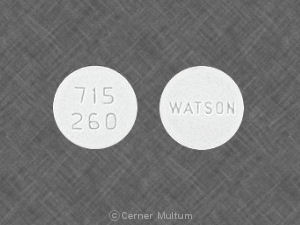Quinine and Alcohol/Food Interactions
There is 1 alcohol/food/lifestyle interaction with quinine.
Quinine Food/Lifestyle
Minor Food Interaction
Coadministration with grapefruit juice does not appear to affect the pharmacokinetics of quinine in a clinically relevant manner. Although grapefruit juice is an inhibitor of CYP450 3A4 and quinine is metabolized by this pathway to its major metabolite, 3-hydroxyquinine, a study of ten healthy volunteers found no significant differences in quinine peak plasma concentration (Cmax), time to reach Cmax (Tmax), terminal elimination half-life, systemic exposure (AUC), or apparent oral clearance (Cl/F) when a single 600 mg oral dose of quinine sulfate was administered in combination with 200 mL of orange juice (control), half-strength grapefruit juice, and full-strength grapefruit juice twice daily for 6 days each, separated by a 2-week washout period. Relative to the control period, the apparent renal clearance of quinine was markedly increased by 81% during treatment with half-strength grapefruit juice. However, since renal clearance accounts for approximately 6% of the total clearance of quinine, this change would likely have minimal clinical impact. The lack of a significant interaction is probably due to the fact that grapefruit juice primarily inhibits intestinal rather than hepatic CYP450 3A4, and quinine is not known to undergo significant presystemic metabolism as evidenced by its relatively high oral bioavailability (76% to 88%). Nevertheless, excessive consumption of grapefruit juice and tonic water (which contains quinine) was suspected as the cause of torsade de pointes arrhythmia in a patient with a history of asymptomatic long QT syndrome. Treatment with magnesium sulfate and metoprolol had no effect, but the arrhythmia resolved spontaneously 48 hours after discontinuation of the drinks. Based on current data, moderate grapefruit juice consumption is probably safe for the majority of patients taking quinine.
References (5)
- Ho PC, Chalcroft SC, Coville PF, Wanwimolruk S (1999) "Grapefruit juice has no effect on quinine pharmacokinetics." Eur J Clin Pharmacol, 55, p. 393-8
- Hermans K, Stockman D, Van den Branden F (2003) "Grapefruit and tonic: a deadly combination in a patient with the long QT syndrome." Am J Med, 114, p. 511-2
- (2006) "Product Information. Qualaquin (quinine)." AR Scientific Inc
- Zhang H, Coville PF, Walker RJ, Miners JO, Birkett DJ, Wanwimolruk S (1997) "Evidence for involvement of human CYP3A in the 3-hydroxylation of quinine." Br J Clin Pharmacol, 43, p. 245-52
- Mirghani RA, Yasar U, Zheng T, et al. (2002) "Enzyme kinetics for the formation of 3-hydroxyquinine and three new metabolites of quinine in vitro; 3-hydroxylation by CYP3A4 is indeed the major metabolic pathway." Drug Metab Dispos, 30, p. 1368-71
Switch to consumer interaction data
Quinine drug interactions
There are 491 drug interactions with quinine.
Quinine disease interactions
There are 8 disease interactions with quinine which include:
- QT prolongation
- G-6-PD deficiency
- myasthenia gravis
- ocular toxicity
- thrombocytopenia
- tinnitus
- liver impairment
- renal impairment
More about quinine
- quinine consumer information
- Check interactions
- Compare alternatives
- Pricing & coupons
- Reviews (20)
- Drug images
- Side effects
- Dosage information
- During pregnancy
- Drug class: antimalarial quinolines
- Breastfeeding
- En español
Related treatment guides
Drug Interaction Classification
| Highly clinically significant. Avoid combinations; the risk of the interaction outweighs the benefit. | |
| Moderately clinically significant. Usually avoid combinations; use it only under special circumstances. | |
| Minimally clinically significant. Minimize risk; assess risk and consider an alternative drug, take steps to circumvent the interaction risk and/or institute a monitoring plan. | |
| No interaction information available. |
See also:
Further information
Always consult your healthcare provider to ensure the information displayed on this page applies to your personal circumstances.


